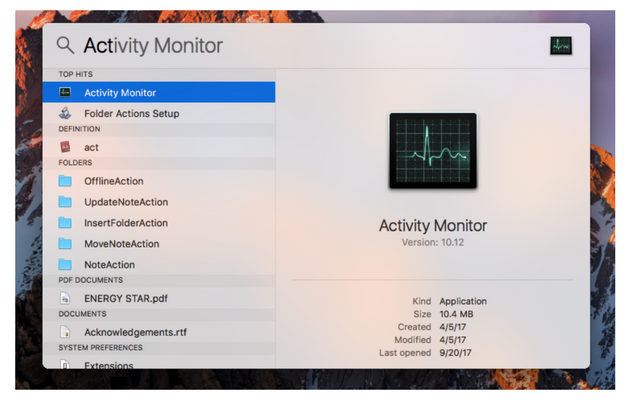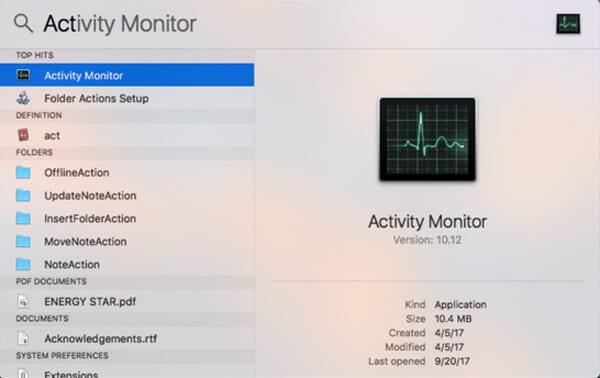- Activity Monitor – The Task Manager on Mac Activity Monitor on new macOS The Activity Monitor lets you keep an eye on the running processes on your Mac by CPU, Memory, Energy, Disk, and Network usages so that you can quickly spot anomalies and stop them from affecting the overall health and speed of your Mac.
- What I didn't know at the time is that Chrome has its own Task Manager that looks and works a lot like the Mac's Activity Monitor. To use it, click on the three-dot menu button in Chrome, followed.
- Ar there MAC OS X equivalents of MSCONFIG, to see what runs at startup, and of Task Manager to see what processes are running? Premium Content You need a subscription to comment.
- See how much energy your Mac is using. You can find out how much energy your Mac is using, and see which apps or processes are using the most energy. How to monitor overall energy use.
Many users who have converted from Windows to Mac computers are often left wondering as to what is the Task Manager equivalent on a Mac and how to open it. In this article, we will be showing you how to open and use Task manager on Mac.
Mac Equivalent of Task Manager
The Task Manger on a Windows Computer is used to quit applications, whenever an application or program gets stuck or freezes on a Windows Computer.
The most powerful app and process management utility in the Mac OS X GUI, Activity Monitor is a powerful task manager that will reveal not only all running and active applications, but also all active and inactive processes. This includes quite literally everything running on the Mac, including the aforementioned windowed apps, and even.
Activity Monitor is the Mac’s version or the equivalent of Task Manager as found in Windows Computers. Similar to the Task Manager, Activity Monitor provides the details of the CPU or the Memory being used by Apps and services on your Mac.
While the episodes of Apps and native Services freezing on a Mac are fewer compared to Windows Computers, Mac also provides a dedicated Force Quit Applications Manager, in addition to the Activity Monitor.
In case you do come across any App getting stuck on your Mac, you can make use of Force Quit Applications Manager to quit the offending App or make use of the Activity Manager to see more details about this app.
Open Task Manager On Mac
As mentioned above the Mac equivalent of Task Manger is known as Activity Manager and it provides detailed information about how much CPU, Memory, etc. an application or process is using up on your Mac.
1. Click on the Finder icon (Happy Face) from the left corner of the Dock on your Mac
2. On the next screen, click on Applications from the side menu (See image below)
3. In the Applications Folder, click on the Utilities Folder and open it (See image above)
4. In the Utilities Folder, click on Activity Monitor (which is usually the first item in the list)
5. On the next screen (Activity Monitor), you will be able to see the details of CPU being used by all the Apps and Services running on your Mac.
Pin Activity Monitor to Dock on Mac
You can avoid the long way of Opening Activity Monitor on your Mac by pinning the Activity Monitor to the Dock Bar.
1. Once you open the Activity Monitor on your Mac using above steps, it will be visible on the Dock Bar. Simply Right Click on the Activity Monitor icon in the Dock to launch a Menu (See image below)
2. Next, hover your mouse over Options and then click on Keep in Dock option in the side menu that appears (See image above).
From now on you will see the Activity Monitor Icon pinned to the Dock on your Mac and you will be able to access the Activity Monitor by simply clicking on its icon on the Dock.
How to Use Task Manager on Mac
Latest Macbook Air Operating System
Below is a short guide on how to use the Mac equivalent of Task Manager, known as the Activity Monitor on your Mac.
1. View CPU, Memory and Other System Resources Being Used on your Mac
Once you open Activity Monitor on you Mac, you will see a screen with five Tabs – CPU, Memory, Energy, Disk and Network (See image below).
CPU – Clicking on the CPU tab provides you information about the amount of CPU being used by the various Applications on your Mac.
Memory – Clicking on the Memory tab allows you to see the amount of Memory being used by the Apps and System Programs on your Mac. You will see the Apps using the highest Memory at the top of the list (See image below)
The Memory tab also provides a totals chart at the bottom, displaying an overview of the total Memory usage on your Mac.
Energy – Tapping on this tab will bring up the Energy Usage by the Apps and processes on your Mac. The Apps using the most energy (battery) in the last 8 hours or since your Mac has started up will be listed at the top.
At the bottom of the screen you will see how much battery is left, how long the battery is expected to last and how many hours has the battery been used for.
Disk – Tapping on the Disk tab will show you the amount of data that each application or process has read from your disk and written to your disk.
At the bottom of the Disk tab you will see the total amount of data read and total amount of data written by the disk including all processes and apps.


Network – Tapping on the Network tab will show you how much data each process is sending and receiving over your internet connection.
At the bottom, you will see the total amount of data received and total amount of data sent by your Mac computer.
View Info About an Application or Process
The Activity Monitor also allows you to view additional information about Application and Processes on your Mac.
1. Click on the Application or the process that you want to view more information about.
2. Next, click on the i button from the top left corner of the Activity Monitor window (See image below)
3. A window will pop-up showing you more information about the application or process.
Force Quit Applications in Activity Monitor
Follow the steps below to Force Quit Applications using the Activity Monitor on your Mac
Task Manager For Apple
1. Once you have opened the Activity Monitor on your Mac, click on the Application that you want to Force Quit (See image below)
2. Next, click on the x button, located near the top left corner of the Activity Monitor window (See image above)
3. You may see a pop-up asking you to confirm that you do want to Quit the App. Click on Force Quit option in the pop-up to quit this App.
Ctrl + Alt + Delete Equivalent on Mac
In addition to the Activity Monitor, Mac computers also feature a Force Quit Applications Manager which allows you to force quit Apps.
The Force Quit Applications Manager on a Mac can be accessed by holding down Command + Option (Alt key) + Escape Keys on your Mac.
The Force Quit Applications Manager just allows you to Force Quit Apps and does not provide details like how much CPU or memory an application is using.

You will find below the steps to use Force Quit Applications Manager.
Open Force Quit Applications Manager on Mac
If your primary goal is to only Force Quit an application on your Mac and you do not care about how much CPU or Memory the application is using up, then you should make use of the Force Quit Applications Manager to perform this task.
There are 2 ways to open the Force Quit Application manager on your Mac
Task Manager On Macbook Air
1. Click on the Apple icon in the top menu-bar on your Mac and then click on Force Quit… Option (See image below)
2. On the Force Quit Applications screen, click on the Application Name that you want to quit and then click on the Force Quit button (See image below).
3. Next, you will see a pop-up asking you to confirm that you do want to Force Quit this app. Midi files cinderella. Click on Force Quit to quit this application.
In case an application is active, you can Force Quit the Application by clicking on the Apple icon in the top-menu bar of your Mac and then clicking on Force Quit (Application Name) from the drop-down menu (See image below).
Note: You can also use the Command + Alt + Esc key combination to launch the Force Quit Application Manager on your Mac.